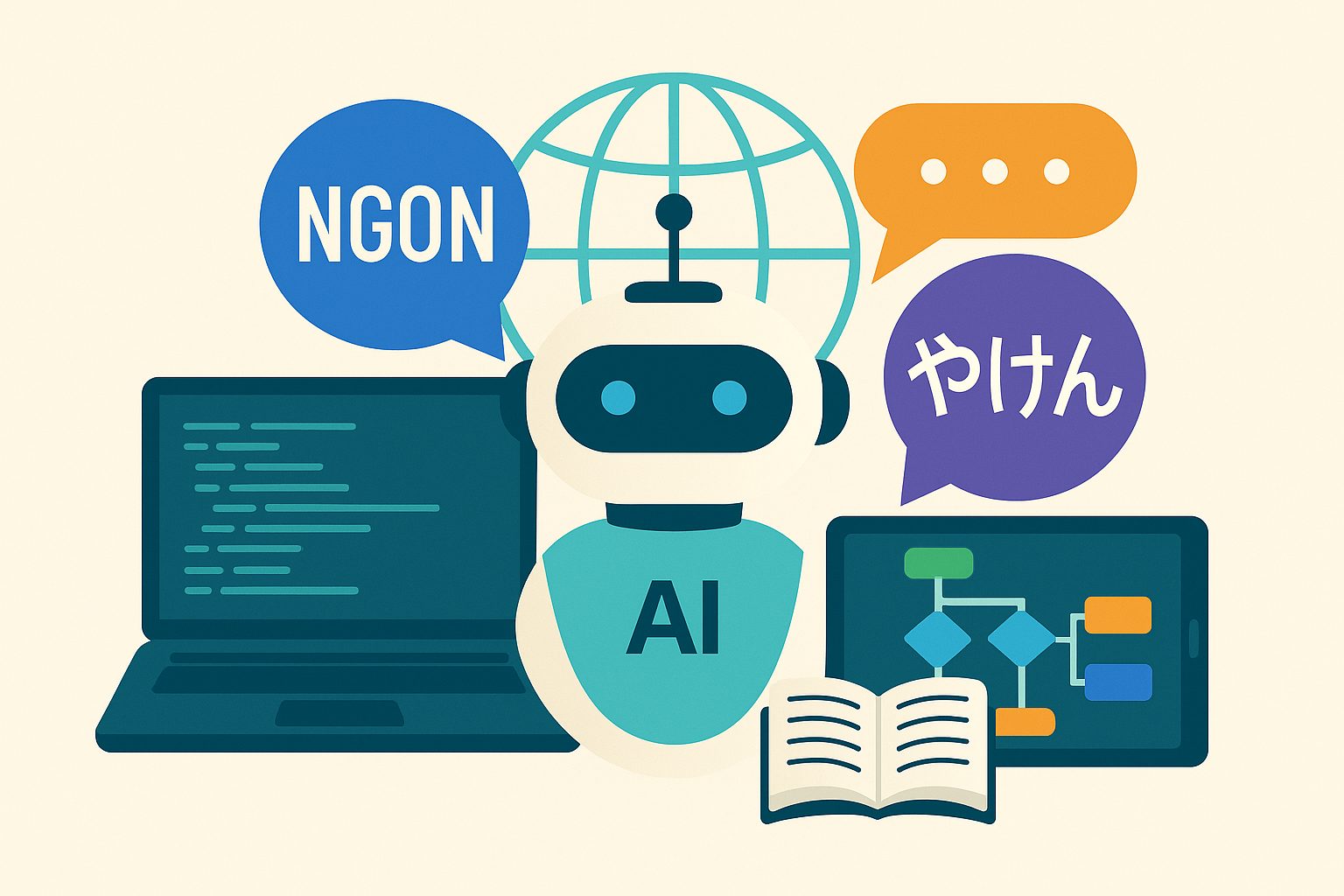1. Introduction
In the digital age, AI chatbots are essential tools for automating customer interactions. To be effective, chatbots must understand not only formal language but also slang and local dialects – core parts of regional communication culture. This article explores AI chatbot programming to handle slang and the role of NLP, data, and NKKTech Global’s solutions.
2. Why should chatbots understand slang and local dialects?
Users rarely speak in textbook language. Instead, they use slang, abbreviations, or regional expressions like “ngon nghẻ”, “dzậy hả”, “chốt đơn”, or “kèo thơm”. If chatbots can’t understand these, user experience breaks down, leading to loss of trust and poor automation performance.
3. Challenges in processing non-standard language
- Regional diversity: Vietnam has many dialects with unique vocabulary and pronunciation.
- Lack of training data: Standard datasets often exclude slang and regional speech.
- Language variation: Users may misspell words or use character substitutions (“cưng qá” instead of “cưng quá”).
- Ambiguous context: Words can have different meanings based on context.
4. AI Chatbot Programming Techniques for Slang Understanding
To solve these challenges, developers can apply modern NLP techniques:
- Word Embedding (FastText, Word2Vec): Helps models learn semantic relationships even for new or misspelled words.
- Fine-tuned Transformers (BERT, PhoBERT, GPT): Customize pretrained models with slang-rich datasets to improve understanding.
- Text normalization: Preprocess text to convert slang to formal expressions.
- Multi-turn context management: Maintain conversational context to disambiguate meanings.
- Advanced intent classification: Combine sentiment and semantic analysis to detect slang intent.
5. Building and Processing Regional Language Data
Data is critical in AI chatbot programming for slang comprehension:
- Collect real conversations: From chats on Facebook, Zalo, forums, livestreams, etc.
- Manual or semi-automated labeling: Use crowdsourcing to annotate slang and local phrases.
- Data augmentation: Generate new samples by replacing formal words with slang and vice versa.
- Regional segmentation: Train models per region: North, Central, South Vietnam.
6. Real-world Solutions from NKKTech Global
NKKTech Global has implemented AI chatbot solutions capable of understanding regional slang in Vietnam. Example applications:
- Multi-region sales chatbot: Understands Southern slang like “chốt kèo”, “ship liền”, without manual input.
- Customer care chatbot: Differentiates friendly versus negative slang for proper handling.
- Regionalized training: Separate models for Hanoi, Da Nang, Ho Chi Minh City with local vocabulary.
7. The Future of AI Chatbots in Multilingual Environments
Understanding slang and regional language boosts personalization and user engagement. Future AI chatbot programming will focus on:
- Learning from real-time conversation data
- Understanding cultural and social nuances
- Adapting to industry-specific language (teen speak, IT jargon, medical terms)
Voice support for local accents will also play a key role in multimodal chatbots.
8. Conclusion
Understanding slang and regional language is crucial for smart, user-friendly AI chatbots. With NLP, real-world data, and flexible deployment from NKKTech Global, businesses can create regionally fluent bots for enhanced automation.
For in-depth chatbot implementation support, contact the expert team at NKKTech Global.




